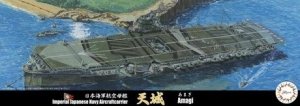-
Załączniki bezpieczeństwa
Załczniki do produktuZałączniki dotyczące bezpieczeństwa produktu zawierają informacje o opakowaniu produktu i mogą dostarczać kluczowych informacji dotyczących bezpieczeństwa konkretnego produktu
-
Informacje o producencie
Informacje o producencieInformacje dotyczące produktu obejmują adres i powiązane dane producenta produktu.Fujimi
-
Osoba odpowiedzialna w UE
Osoba odpowiedzialna w UEPodmiot gospodarczy z siedzibą w UE zapewniający zgodność produktu z wymaganymi przepisami.
Fujimi 433240 Warship Next IJN Battleship Haruna 1944 Operation Sho-1 w/Photo-Etched Parts 1/700
Plastikowy model statku do sklejania. Nie zawiera Kleju ani farby.
Lekki krążownik Yahagi został ukończony jako trzeci okręt klasy Agano w Arsenale Marynarki Wojennej w Sasebo w grudniu 1941 roku podczas wojny. Typ Agano jest planowany jako okręt flagowy eskadry niszczycieli i ma nowoczesny wygląd i uzbrojenie, które odróżnia go od poprzedniego typu 5500 ton. Działo główne jest wyposażone w trzy podwójne działa 15 cm i dwa nowo opracowane, długie, podwójne działa 8 cm o wysokim kącie. Po ukończeniu Yahagi brał udział w bitwie na Morzu Filipińskim, bitwie w zatoce Leyte i większych bitwach. W międzyczasie wzmocniono broń przeciwlotniczą. W kwietniu 1945 roku, w operacji Tenichi, odpowiadającej siłom amerykańskim, które wylądowały na Okinawie, wypłynęli jako okręt flagowy 2. Eskadry Niszczycieli, aby eskortować pancernik Yamato. W odpowiedzi na powyższe zmarł w drodze na Okinawę. Produkt to niepomalowany zestaw, który wymaga montażu klejem i pomalowania. Skala to 1/700 i jest to model morski, który nie obejmuje dna statku.
Produkty można wybierać z wielu stanów rocznych
- 28 pojedynczych karabinów maszynowych kal. 25 mm zostało zainstalowanych podczas ostatniego lotu na Okinawę z Yamato w ramach operacji Tenichi w kwietniu 1945 r.
- Po bitwie na Morzu Filipińskim z końca czerwca 1945 r. zainstalowano 18 karabinów maszynowych kal. 25 mm, zanim zmieniono kształt pokładu lotniczego.
- Mówi się, że pojedynczy karabin maszynowy nie został wzmocniony podczas bitwy na Morzu Filipińskim w czerwcu 1945 roku.
Przygotowano części odpowiadające corocznej zmianie Yahagi
- Rura nośna dalmierza wysokiego kąta jest podzielona na oddzielne części zgodnie ze zmianą kształtu w 1945 i 1945 roku.
- Pokład lotniczy to dedykowana część, która odpowiada kształtowi otworu i odpowiada dwóm rodzajom rocznych różnic.
- Pokład w pobliżu rufy to dwa rodzaje specjalnych części, które odwzorowują wygląd różnych akcesoriów w zależności od roku.
- Po obu stronach przedniej części mostu znajdują się dwa rodzaje żurawików, jeden do rozmieszczenia i drugi do przechowywania. Ten pierwszy dotyczy 1945 roku i jest używany, gdy łódź podwieszona na statku nie jest rozładowywana.
Odtwórz cechy trzeciego statku Yahagi, który różni się od siostrzanego statku
- Most jest wykonany wyłącznie dla Yahagi, dzięki czemu różnica kształtu może być wyraźnie odtworzona.
- W przeciwieństwie do zapachu sake, osłona głównej broni ma specjalną część z małym okienkiem celownika z przodu po lewej stronie osłony.
Odtwórz nowoczesny kształt typu Agano, który różni się od dotychczasowych japońskich lekkich krążowników.
- Kadłub jest typu lewy-prawy, a iluminatory są zamknięte, a liczba jest zmniejszona w porównaniu do czasu ukończenia.
- Obwód elektryczny po lewej stronie, który biegnie z boku, jest delikatną rzeźbą, która nawet wyraża część zapięcia.
- Na pokładzie i każdej warstwie mostu metalowe elementy mocujące, które wyrażają podłogę z linoleum i antypoślizgowy / paskowy wzór żelaznego pokładu, są wyrażone ostrymi rzeźbami.
- Część schronu przed mostem jest zintegrowana z częściami za pomocą formy ślizgowej. Do precyzyjnego rzeźbienia i modelowania na bocznej ścianie.
- Główna wieżyczka to forma ślizgowa, która odtwarza okna, szwy rattalu i blachy stalowej po bokach i na górze.
- Realistyczne modelowanie z usuniętą siatką w górnej części komina, a wewnętrzna płyta rektyfikacyjna jest również trójwymiarowa jako oddzielna część.
- Komin jest klejony lewy i prawy, a także grawerowany jest małpi ratal. Każda rura parowa jest niezależną częścią i wyraża różnicę w stosunku do siostrzanego statku.
- Trójkątna kratownica ostrosłupowa na dole masztu jest wyciągana za pomocą formy ślizgowej.
- Małe dźwigi po obu stronach tylnego końca pokładu roboczego lotnictwa są odwzorowane trójwymiarowo i dokładnie z oddzielnymi częściami.
- 4,5-metrowy dalmierz wysokokątny dokładnie kształtuje kształt ramienia kolumny lub jest dołączony jako dedykowana część.
- Sonda elektryczna nr 22, rampa (przechowywanie), antena kierunkowska, schowek na skrzydło pomocnicze, itp. są wykonane w osobnych częściach.
- Długa 8-centymetrowa podwójna broń kątowa jest rejestrowana jako nowy ekskluzywny produkt z osłoną i lufą jako oddzielnymi częściami.
- Źuraw rozpoznawczy wody odtwarza nawet lekkie otwory z boku, aby poprawić poczucie precyzji.
- Wodnosamolot pokładowy zawiera dwa wodnosamoloty typu zero (trzymiejscowe). Kolor listwy jest szary.
Dwa rodzaje dołączone naklejki Istnieją dwa rodzaje dołączonych kalkomanii, które obejmują oznaczenia flagi okrętu wojennego, flagi słońca i statku powietrznego lotniskowca. Dostępne są trzy rozmiary flag okrętowych. Zawiera wymiary w skali 1/700 rzeczywistej szerokości 10, szerokości 6 i szerokości 3. Hinomaru z samolotu na lotniskowcu, przyjaciel lub wróg identyfikacyjny (żółty pasek) itp. są rejestrowane, a Hinomaru obejmuje te bez białej ramki w drugiej połowie wojny. Kalkomania, która zawiera oznaczenie szkicu, emblemat kwiatu chryzantemy na dziobie oraz oznaczenie nazwy statku na rufie (dwa rodzaje złotego i kolorowego malowania okrętu). Karabin maszynowy Typ 96 25 mm (potrójny / pojedynczy) można wybrać z dwóch rodzajów wysokiej jakości części. Precyzyjny kształt z oddzielnymi częściami na lufę i cokół oraz konstrukcją ułatwiającą malowanie osobno. Zaprojektowany tak, aby pasował do pozycji kleju poprzez połączenie suwnicy i prowadnicy beczki oraz do przecinania bramy po użyciu wlewu kleju. Kolor listwy jest szary dla suwnicy i metaliczny pistolet dla lufy, dzięki czemu ekspresja kodowana kolorami jest możliwa bez malowania. Odrębną częścią jest również kuloodporna płyta potrójnego karabinu maszynowego, co czyni go jeszcze bardziej precyzyjnym. Drugi typ zawiera konwencjonalny typ integralnie formowany.
Formowane części składają się z trzech kolorów, szarego, przezroczystego i metalicznego, które imitują kolor Kure Naval Arsenal. 208 części do złożenia
The light cruiser Yahagi was completed as the third Agano-class ship at the Sasebo Naval Arsenal in December 1941 during the war. The Agano type is planned as a flagship of the Destroyer Squadron, and features a modern appearance and armament that sets it apart from the previous 5,500 ton type. The main gun is equipped with three 15 cm twin guns and two newly developed long 8 cm twin high angle guns. After the completion, Yahagi participated in the Battle of the Philippine Sea, the Battle of Leyte Gulf, and major battles. In the meantime, anti-aircraft weapons were strengthened.
In April 1945, in Operation Tenichi corresponding to the U.S. forces that landed in Okinawa, they set sail as the flagship of the 2nd Destroyer Squadron to escort the battleship Yamato. In response to the above, he died on the way to Okinawa. The product is an unpainted kit that requires adhesive assembly and painting. The scale is 1/700, and it is an offshore model that does not include the bottom of the ship.
Products can be selected from multiple annual states
- 28 25mm single machine guns are installed in the final appearance of the final sortie to Okinawa with Yamato by Operation Tenichi in April 1945.
- After the Battle of the Philippine Sea from the end of June 1945, 18 25mm single machine guns were installed, before the shape of the aviation work deck was changed.
- It is said that the single machine gun was not strengthened during the Battle of the Philippine Sea in June 1945.
Parts that correspond to the annual change of Yahagi are prepared
- The support tube of the high angle rangefinder is made into separate parts according to the shape change in 1945 and 1945.
- The aviation work deck is a dedicated part that corresponds to the shape of the opening and corresponds to two types of yearly differences.
- The deck near the stern is two types of special parts to reproduce the appearance of different accessories depending on the year.
- There are two types of davits on both sides of the front of the bridge, one for deployment and one for storage. The former is for 1945 and is used when the ship-mounted boat is not unloaded.
Reproduce the characteristics of the third ship Yahagi, which is different from the sister ship
- The bridge is made exclusively for Yahagi so that the shape difference can be clearly reproduced.
- Unlike the smell of sake, the main gun canopy has a special part with a small aiming hand window on the front left of the canopy.
Reproduce the modern Agano-type shape that is different from the flow of Japanese light cruisers until then.
- The hull is a left-right bonded type, and the portholes are closed and the number is reduced compared to when it was completed.
- The port side electric circuit that runs all around the side is a delicate sculpture that even expresses the fastener part.
- On the deck and each layer of the bridge, the holding metal fittings that express the linoleum floor and the non-slip / strip pattern of the iron deck are expressed with sharp sculptures.
- The shelter part in front of the bridge is integrated into parts using a slide mold. For precise sculpture and modeling on the side wall.
- The main turret is a slide mold that reproduces windows, rattal and steel plate seams on the sides and top.
- Realistic modeling with the grid at the top of the chimney removed, and the internal rectifying plate is also three-dimensionalized as a separate part.
- The chimney is a left and right bonded type, and the monkey rattal is also engraved. Each steam pipe is an independent part and expresses the difference from the sister ship.
- The triangular pyramid truss at the bottom of the mast is pulled out using a slide mold.
- Small cranes on both sides of the rear end of the aviation work deck are reproduced three-dimensionally and accurately with separate parts.
- The 4.5-meter high-angle rangefinder accurately shapes the columnar arm shape or is enclosed as a dedicated part.
- No. 22 electric probe, ramp (storage), direction finding antenna, auxiliary wing storage, etc. are all made into separate parts.
- The long 8 cm twin high angle gun is recorded as a new exclusive design product with the shield and barrel as separate parts.
- The water reconnaissance crane reproduces even the light holes on the side to improve the sense of precision.
- The on-board seaplane includes two zero-type (three-seater) seaplanes. The molding color is gray.
Two types of attached decals There are two types of attached decals, which include the markings of the warship flag, the sun flag, and the carrier-based aircraft.Three sizes of warship flags are available. Includes 1/700 scale dimensions of the actual 10 width, 6 width, and 3 width. The Hinomaru of the carrier-based aircraft, the identification friend or foe (yellow band), etc. are recorded, and the Hinomaru includes those without a white border in the latter half of the war. A decal that includes the draft notation, the chrysanthemum flower emblem on the bow, and the ship name notation on the stern (two types of gold and warship color painting). Type 96 25 mm machine gun (triple / single) can be selected from two types of quality parts. Precision shape with separate parts for the barrel and pedestal, and a structure that makes it easy to paint separately. Designed to fit in the adhesive position by combining the gantry and the barrel runner, and to cut the gate after using the pouring adhesive. The molding color is gray for the gantry and gun metallic for the barrel, so color-coded expression is possible without painting. The bulletproof plate of the triple machine gun is also a separate part, making it even more precise. The other type contains a conventional integrally molded type.
The molded parts are composed of three colors, gray, transparent, and gun metallic, which imitate the color of Kure Naval Arsenal. 208 parts to assemble (in the case of 1945)













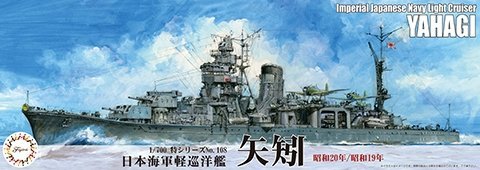
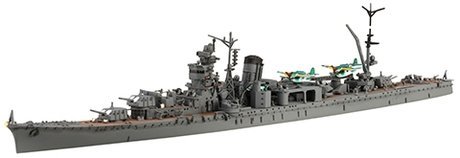
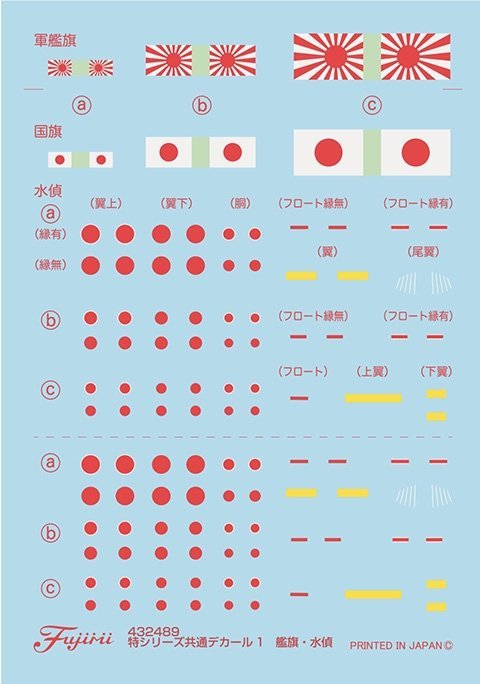
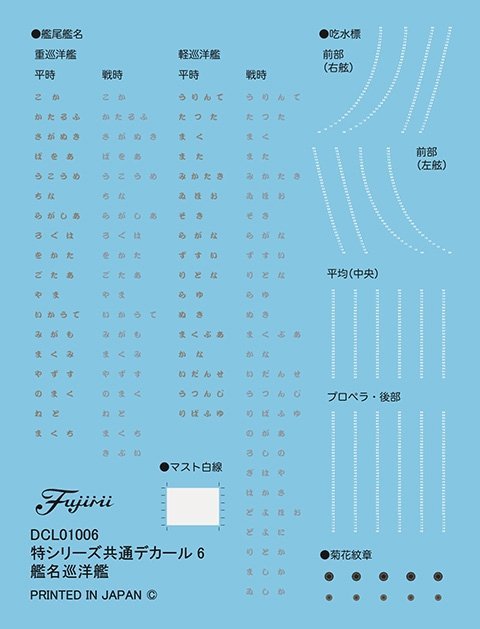

 1 szt.
1 szt.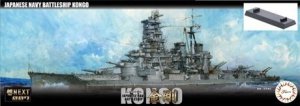
 15 szt.
15 szt.